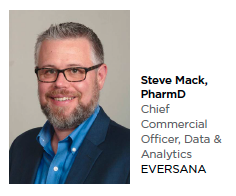 Over the past few years, artificial intelligence (AI) and machine learning (ML) have been trending topics in healthcare but are now being propelled to the forefront of clinical decision support and care delivery. Some organizations, however, have been slow to adopt the utilization of predictive analytics for a number of reasons. From wasted investments in disjointed data sources to staffing gaps, the application of predictive analytics can seem daunting and unattainable. In reality, implementing a data integration strategy can break down the traditional healthcare silos that have made it challenging to execute on the insights gleaned from data and analytics and, ultimately, improve patient outcomes.
Over the past few years, artificial intelligence (AI) and machine learning (ML) have been trending topics in healthcare but are now being propelled to the forefront of clinical decision support and care delivery. Some organizations, however, have been slow to adopt the utilization of predictive analytics for a number of reasons. From wasted investments in disjointed data sources to staffing gaps, the application of predictive analytics can seem daunting and unattainable. In reality, implementing a data integration strategy can break down the traditional healthcare silos that have made it challenging to execute on the insights gleaned from data and analytics and, ultimately, improve patient outcomes.
To address these challenges, EVERSANA, the leading provider of commercial services to the life sciences industry, has been helping biopharma clients focus on core areas in data and analytics to improve decision-making and meaningfully drive business outcomes. Combining the power of analytics with ready-to-deploy, real-time actions, EVERSANA has developed a tech-enabled solution – ACTICS – to deliver the client-tailored solutions that pharmaceutical innovators need to optimize their product and patient journeys.
Four Ways to Strengthen Commercialization Efforts
Data collection shows no signs of slowing down, so how can the life sciences industry adapt and evolve to leverage these tools to move the needle forward? Here are four ways predictive analytics can strengthen your commercialization efforts and drive your next best action.
1. Create informed commercial strategies with predictive, evidence-based data. Product launches for unique, life-altering therapies demand an integrated data and analytics strategy across the patient journey. The reality is that companies spend more than $125 million over three years leading up to launch, yet 66% of drugs still don’t meet launch expectations. With rich, clinical insights from predictive and actionable data, commercialization efforts can be further strengthened to improve patient outcomes, such as improving forecasting and communications with patients or identifying undiagnosed patients with a rare or complex condition.
2. Put the patient at the center of the solution. Delivering value in the era of empowered patients renders the one-size-fits-all patient services program obsolete. Data solutions are the cornerstones for how patient programs are supported and perform. Through the accuracy of predictive analytic tools and machine learning, we can identify and engage with patients across each stage of their treatment plans. These tools allow us to predict the probability of nonadherence, develop patient personas, recommend hub tactics actions and measure the size of the potential impact. The key for pharma brands who increasingly play a role in supporting patients through their care journey is to think about how to implement predictions in the apparatus of patient and hub services. A prediction alone is not interesting. A prediction that enables an action and learns from the outcome of that action is what creates a high-performance operation. Combining research and AI-driven analytics have the potential to transform healthcare by helping us identify diseases faster, decrease costs through precision therapies, improve clinical trial enrollment, and increase operational effectiveness.
3. Develop insights into tomorrow’s market landscape. Navigating today’s shifting healthcare landscape is complicated. In recent years, we’ve witnessed many promising treatments enter the marketplace, yet the road to commercialization can be drawn out and challenging. Determining context for the competitive landscape and addressing key questions is critical to inform an optimal price and contract strategy. Build a seamless approach that begins with real-world data to understand the true value of the market and identify the highest-value opportunities. Evidence-based understanding, pricing strategies and payer insight are needed to execute a comprehensive market access strategy that enables payers, providers and patients to make better decisions about treatments.
4. Inform your next best action with evidence-based, real-world data. The increasing availability of real-world data allows for the rapid generation of evidence and value measurement. By implementing a tech-enabled solution like ACTICS, deep, rich longitudinal data on patients can be used to develop and design comparative studies to measure clinical and economic outcomes. RWE strategy, design, messaging, and content development enable strong brand positioning and pricing.
Today, we have access to more data from more sources than we could ever dream possible. Living in a digital world, we increasingly need to efficiently and effectively process this data for insights and actions in order to be competitive.
The life sciences industry can leverage this data using analytic tools and machine learning to rapidly identify patient behaviors and patterns – allowing us to predict “next best actions" in our quest to improve patient outcomes.(PV)
EVERSANA is the leading independent provider of global services to the life sciences industry. The company’s integrated solutions are rooted in the patient experience and span all stages of the product life cycle to deliver long-term, sustainable value for patients, prescribers, channel partners and payers. The company serves more than 500 organizations, including innovative start-ups and established pharmaceutical companies, to advance life science solutions for a healthier world.
For more information, visit EVERSANA.COM.










